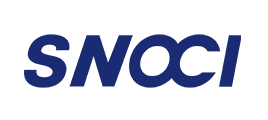Reflow soldering is an important soldering technique in the field of electronic manufacturing, mainly used to solder surface mount components (SMD) onto printed circuit boards (PCBs).
1、 Working principle
The core principle of reflow soldering is to print solder paste on the solder pads of the PCB in advance, and then place the components on the solder pads. When the PCB passes through the reflow soldering furnace, the solder paste melts at high temperature, and then solidifies through cooling, thus forming a reliable electrical connection.
Heating stage
After entering the reflow soldering furnace, the temperature of the PCB gradually increases. This stage mainly involves evaporating the solvent in the solder paste and activating the flux. For example, during this process, the temperature may gradually rise from room temperature to around 150 ℃, lasting approximately 60-90 seconds. The specific time and temperature curve may vary depending on different solder paste formulations and component requirements.
Reflux stage
This is the critical welding stage, where the temperature continues to rise, causing the solder paste to reach a molten state. In general, the melting temperature of tin lead solder is around 183 ℃, while the melting temperature of lead-free solder is slightly higher. For example, the melting temperature of tin silver copper alloy (SAC) solder is about 217 ℃. At this point, the liquid solder, under the action of surface tension, fully contacts and wets the component pins and PCB pads, forming good solder joints. The reflux stage usually lasts between 30-60 seconds.
cooling stage
After welding is completed, the PCB needs to be rapidly cooled to solidify the solder joints. Rapid cooling helps refine the microstructure of solder joints and improve their mechanical and electrical properties. The cooling rate is generally controlled at around 3-5 ℃/s, ultimately bringing the PCB temperature back to around room temperature.
2、 Equipment components
Heating system
The heating system of a reflow soldering furnace usually consists of multiple heating zones, each of which can independently control the temperature. Common heating methods include hot air heating and infrared heating.
Hot air heating is the process of transferring heat through the circulation of heated air, which can evenly heat the PCB. For example, some large reflow soldering furnaces are equipped with powerful hot air circulation devices to ensure that heat is evenly distributed to all corners of the PCB.
Infrared heating utilizes the radiation characteristics of infrared radiation to directly transfer heat to PCBs and components. This method heats up quickly, but if the infrared source is unevenly distributed, it may cause local overheating of the PCB. Therefore, in some high-end reflow soldering equipment, infrared heating and hot air heating are combined to achieve the best heating effect.
Delivery system
The transport system is responsible for passing the PCB through the reflow oven at the set speed and direction. The stability and accuracy of the conveying speed have a significant impact on the welding quality. Generally speaking, the conveying speed can be adjusted within a certain range to adapt to different production rhythms and welding requirements.
The width of the conveyor track can also be adjusted according to the size of the PCB. At the same time, in order to prevent the PCB from shifting during transportation, the transportation system is also equipped with positioning devices to ensure that the PCB can accurately pass through various heating and soldering areas.
Temperature controller
The temperature control system is a key component of the reflow soldering furnace. It monitors temperature in real-time through temperature sensors installed near the heating area and PCB, and controls the power of the heating system based on a preset temperature curve, thereby achieving precise temperature control.
The advanced temperature control system can achieve programming and storage of temperature curves, making it convenient for users to call according to different welding process requirements. And it can also record and analyze temperature data for quality traceability and process optimization.
ventilation system
During the reflow soldering process, harmful gases such as solvent volatiles and flux volatiles are generated in the solder paste. The function of the ventilation system is to timely discharge these harmful gases outside the furnace, while maintaining air circulation inside the furnace to ensure the stability of the welding environment.
The ventilation system generally includes exhaust fans, ventilation ducts, and filtering devices. The filtering device can filter out some harmful particles and odors, reducing environmental pollution.
3、 The advantages of reflow soldering
High precision welding
It can achieve very precise soldering, and for small surface mount components such as resistors and capacitors packaged in 0201 (imperial, 0.02 inches long, 0.01 inches wide), reflow soldering can ensure good soldering quality. This is because the temperature and time control of reflow soldering is relatively precise, which can melt and solidify the solder paste under appropriate conditions, forming high-quality solder joints.
High production efficiency
Reflow soldering is a highly automated soldering method that enables continuous batch production. Compared with manual soldering, it has a faster soldering speed and can complete a large number of PCB soldering in a short period of time. For example, in a modern electronic production line, the reflow soldering furnace can process dozens or even hundreds of PCBs per hour, greatly improving production efficiency.
Good welding quality consistency
Due to the fact that the entire welding process is carried out in a controlled environment and the consistency of welding parameters can be ensured through precise temperature control and a stable transmission system, reflow soldering can ensure that the quality of each solder joint is relatively stable. This is crucial for the production of large-scale, high-quality electronic products, such as smartphones, computer motherboards, and other electronic products.


